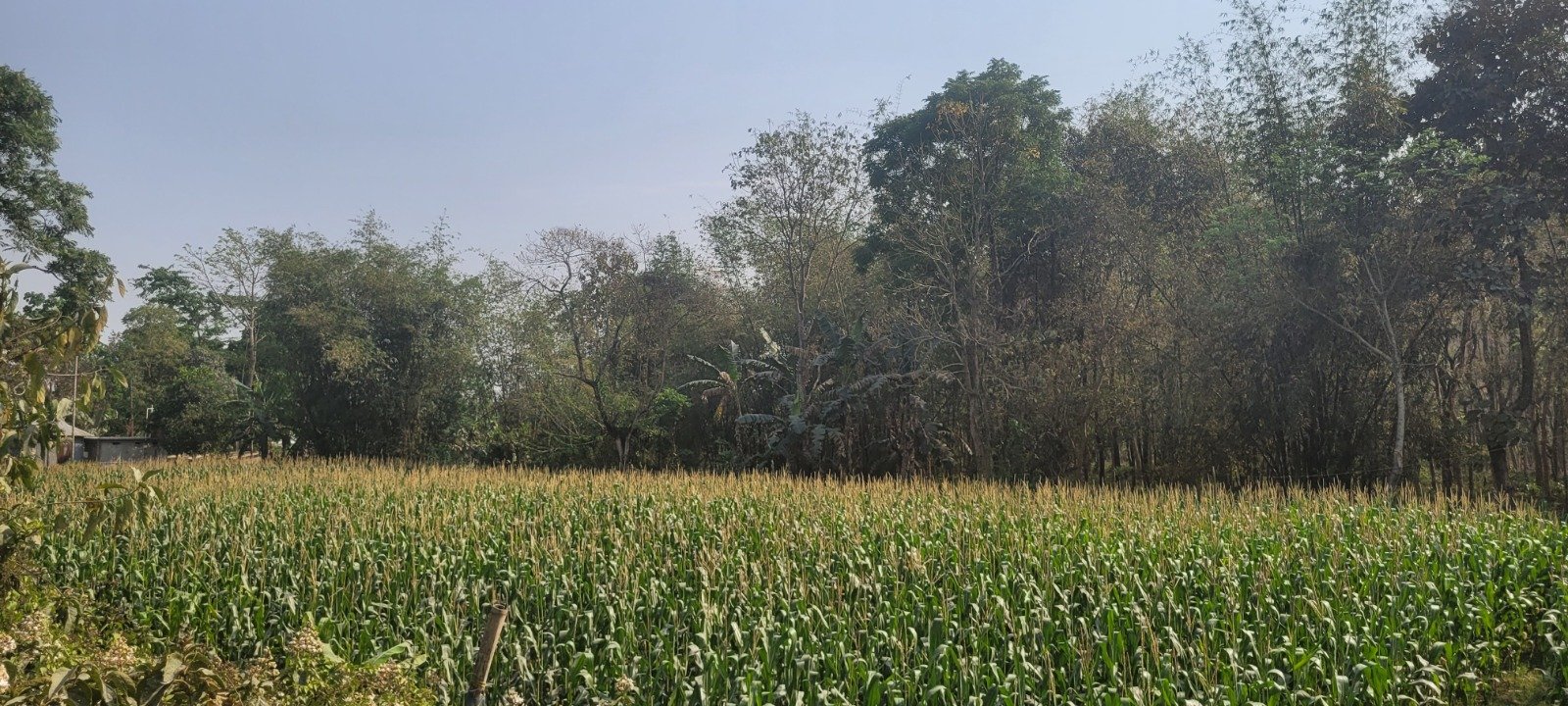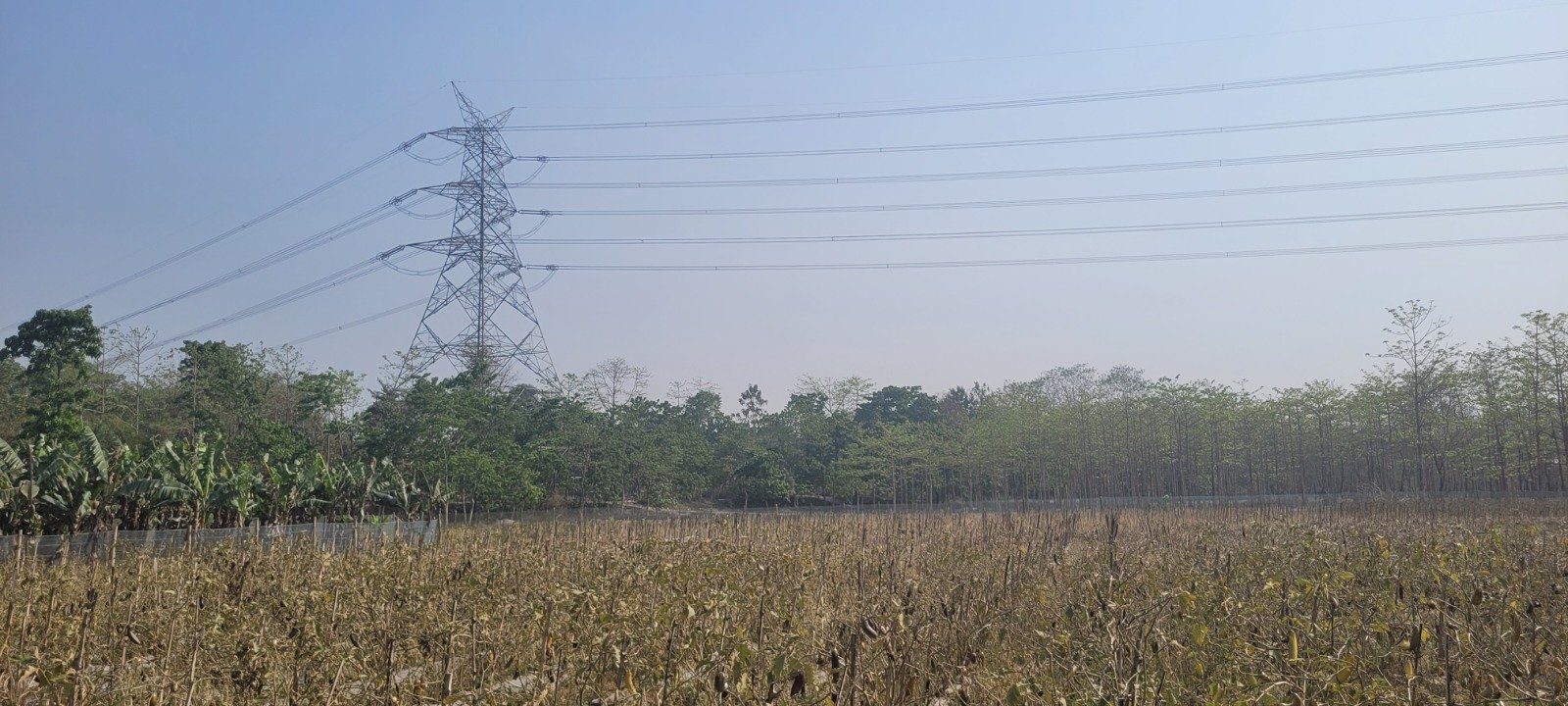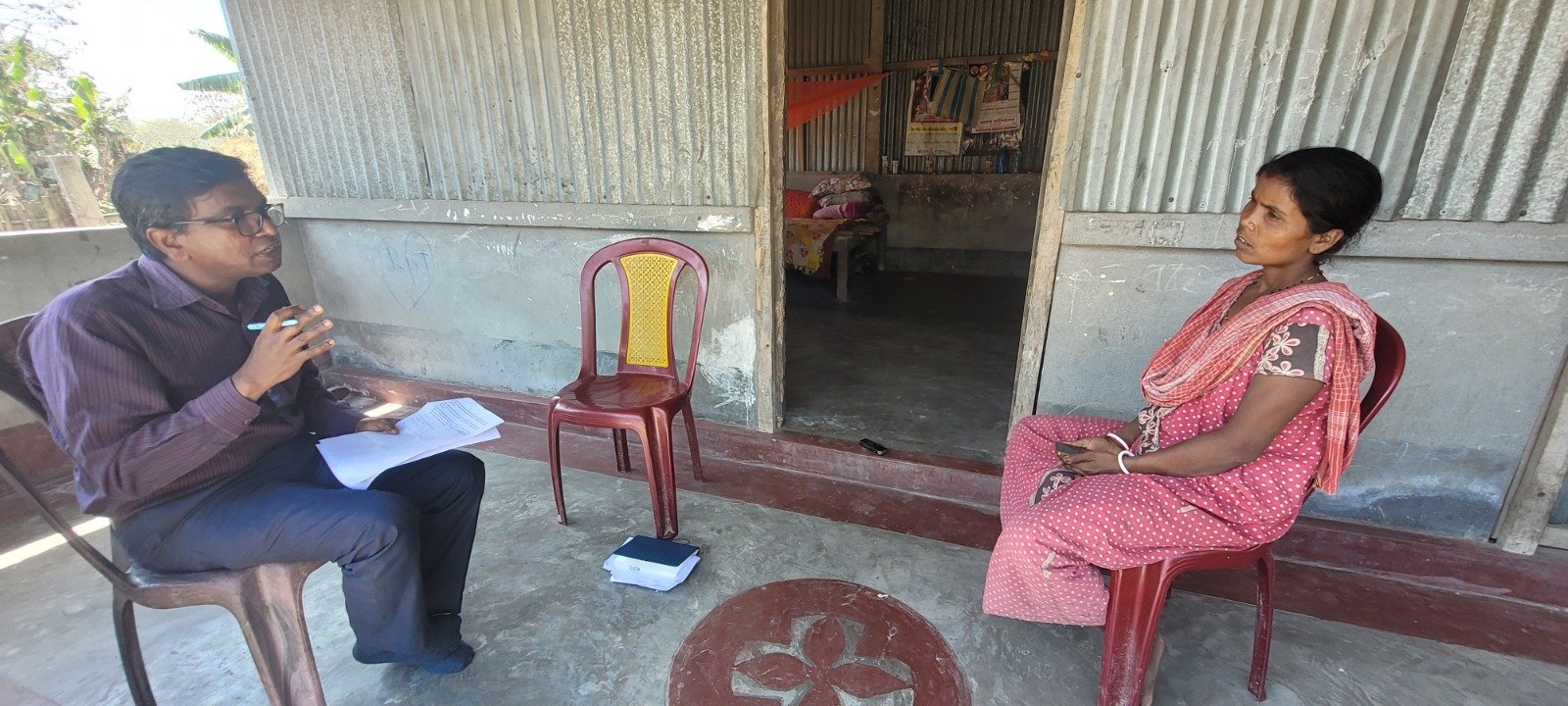TRIBAL RESILIENCE: FOREST- DEPENDENT LIVESTOCK KEEPERS IN EASTERN GANGETIC PLAINS
On International Forest Day, as we reflect on the symbiotic relationship between forests and livelihoods, our field experiences with smallholder farmers in Cooch Behar, Eastern Gangetic Plains reveal both the potential and challenges of forest-dependent communities. Recent interviews conducted under the RUPANTAR project highlight the critical role of forests in sustaining livestock systems highlighting the gaps in the veterinary extension services that must be addressed. These experiences emphasise the delicate balance between forest conservation and the livelihood needs of local communities, showcasing the importance of sustainable practices and improved support systems for forest-dependent farmers.
RELIANCE OF TRIBAL PARTICIPANTS ON FOREST RESOURCES
A tribal woman rearing pigs, goats, cows and poultry near forestland in Patlakhawa village of Cooch Behar demonstrates admirable resilience in challenging conditions. Despite lacking electricity and formal veterinary support until recently, her family heavily relies on forests for:
Free grazing, where the cattle and goats depend entirely on forest grass, supplemented only with salt water at home. During the monsoon season, when grazing in the forest is not possible, the forest provides abundant grass that can be cut and brought home.
Fuelwood collection where families gather wood from forests to meet their cooking and heating needs.
Medicinal plants as traditional remedies for both family and livestock healthcare are derived from forest herbs.
Wild fruits, tubers, mushrooms, fresh edible ferns and herbs supplement the family’s diet and provide occasional income.
In Patlakhawa village, it is also observed that other small and marginal farmers heavily rely on forest resources for grazing their livestock. These examples highlight how forests serve as vital natural support systems for livestock management in resource-constrained settings.
For these tribal farmers forests are acting as a lifeline, however, following systemic barriers to their development and well-being are identified during project monitoring.
CHALLENGES FACED
Under-resourced veterinary services force reliance on uncertified providers, resulting in critical technical gaps.
A tribal woman shares, ‘Due to an unexplained illness, I lost 25 goats in a span of 10 days, and the local service provider failed to diagnose the issue”.
Similarly, another farmer reports,
‘There were milk shortages in my mother goat, forcing me to rely on cow milk for the kids’ survival, which was often failed to be recognized by the local vets’.
Limited access to affordable credit and financial services constrains investments in livestock care and management.
A tribal farmer explains, ‘I cannot afford nutritious feed for my livestock due to insufficient money, resulting in poor growth of animals’.
Despite understanding the importance and benefits of supplementary feed for animals, financial constraints prevent farmers from providing adequate nutrition, which in turn affects the animals’ health and growth.
Some families in the tribal communities near forests still live without electricity, highlighting severe infrastructural gaps.
Overburdened tribal women, who also work as agricultural labourers to supplement income and pay off debts, often face limitations in engaging with livestock initiatives despite their significant labour contributions.
A tribal woman shares, ‘Though I wish to attend and learn from skill-oriented training sessions of the project, my continuous engagement in household chores, childcare, animal care and agricultural operations prevents me from attending. As a result, I lag in adopting complete scientific practices in goat rearing’.
Most developmental communications fail to reach these farmers in a comprehensible language, leading to underdeveloped livestock management practices.
Developmental projects designed without community inputs often fail to align with actual needs or communicate tangible benefits. This mismatch between farmers’ expectations and project teams, leads to unclear deliverables, a common critique of top-down extension models.
To address these challenges, the RUPANTAR project has implemented several initiatives. It adopted a participatory project design during the planning phase, developed roadmaps, and engaged multi-stakeholders in ScAD (Scaling Assessment and Discussion) tool workshops to identify suitable diversification pathways that address smallholders' needs. At the non-plot level, the project focused on supporting smallholders by providing technical information on scientific livestock-rearing practices through implementing partners. It also engaged smallholders in skill-oriented training sessions conducted at their locations in the local language, connected them with certified veterinary officials, experts from agricultural universities and local Farmer producer companies, organized vaccination camps, and frequently monitored the progress of the interventions.
IMPACT
Farmers implementing scientific practices report healthier animals and increased production of meat and milk. Although initially hesitant about medication (especially vaccines), the participants have reported not witnessing any illness in their goats in the past two years- which is otherwise a recurring phenomenon within the goat keepers in the past.
Providing farmers with technical training programs on rearing practices, timely vaccinations and health campaigns has encouraged the adoption of scientific livestock management practices. Farmers who have diversified their livelihood options into goatery, piggery, cattle rearing, and poultry now experience reduced dependence on single sources of income, resulting in greater financial security.
Connection with farmer collectives, local agricultural universities, district veterinary hospitals, research stations, and NGOs has expanded the knowledge-sharing opportunities and market access.
The inclusive approach of involving female farmers in the project has led to increased participation in decision-making and have gained recognition for their role in livestock management.
Farmers have acknowledged the use of concentrated feed for faster growth of goat kids, which helps them secure better prices for their animals.
WAY FORWARD
Building on current progress, several strategies can further enhance the sustainability of forest-livestock relationships.
Enable the tribal communities to be the saviours of the forest ecosystem by harnessing the synergies and managing the trade-offs. For example, promoting agroforestry fodder belts with drought-resistant species can reduce the grazing pressure.
Developing forest-integrated feed solutions such as low-cost silage or forage crops that are affordable and complement forest grazing.
Support initiatives like medicinal plant cultivation to diversify incomes and overexploitation of forest resources.
Need for local veterinary capacity-building initiatives from the government such as training para vets/agro vets with technical skills in diagnosing and treating small ruminant health issues.
Implementing gender-responsive tools such as mobile-based advisories for tribal women complemented by village childcare hubs in such forest locations to support women’s participation.
The challenges observed represent microcosms of a broader truth where tribal communities in forests can sustain their livelihoods only if extension systems address gendered burdens, bridge knowledge gaps and mobilise community action. This International Forest Day let us reorient policies and programs to empower tribal communities that sustain forest ecosystems. By strengthening veterinary services, promoting financial inclusion, and implementing gender-responsive interventions, we can ensure that forest-dependent farmers prosper sustainably while contributing to the conservation of these vital ecosystems.







Authors
Dr. Bhuvana N is a Consultant (Senior Social Researcher) at CIMMYT, India, currently working on the RUPANTAR project. She can be reached at b.n@cgiar.org
Gunjan Rana is a Social Research Coordinator at CIMMYT-India, currently working on the RUPANTAR project. He can be reached at g.rana@cgiar.org
Dr. Dilip Kumar Hajra is an assistant professor in the Department of Agronomy at Uttar Banga Krishi Viswavidyalaya. He specialised in Veterinary and Animal Sciences. He can be reached at dhajra@gmail.com
Acknowledgement
We acknowledge the support of the University of Adelaide and ACIAR for making this project possible. We are grateful to Uttar Banga Krishi Viswavidyalaya and CIMMYT for their valuable research guidance. We also extend our thanks to Satmile Satish Club O Pathaghar and Bhumishakti FPC for their crucial role in facilitating implementation on the ground.


